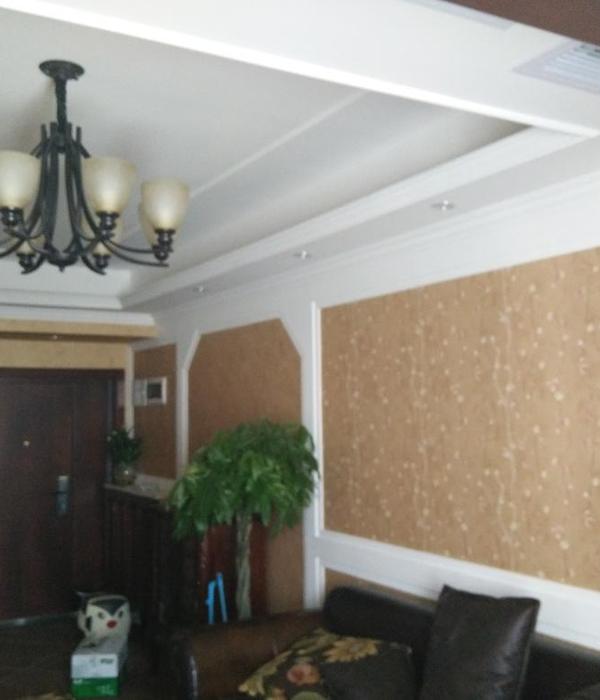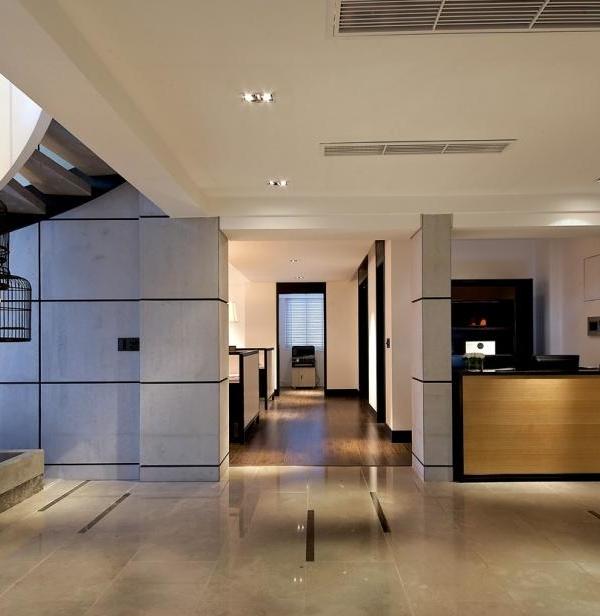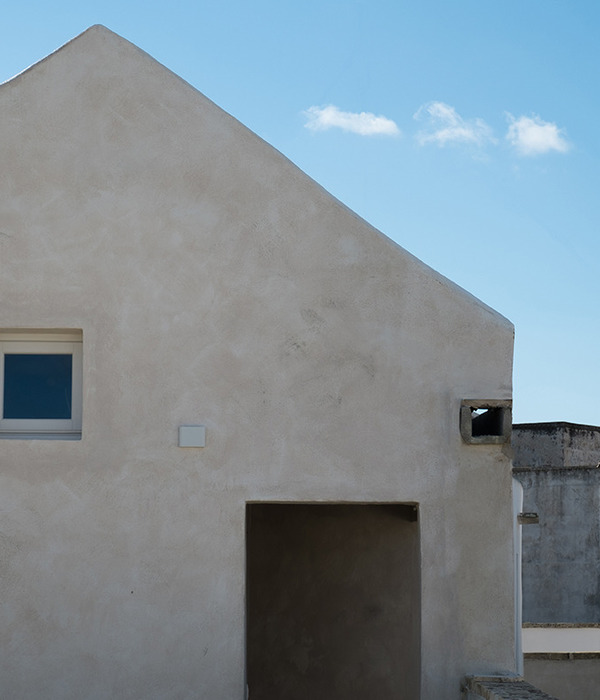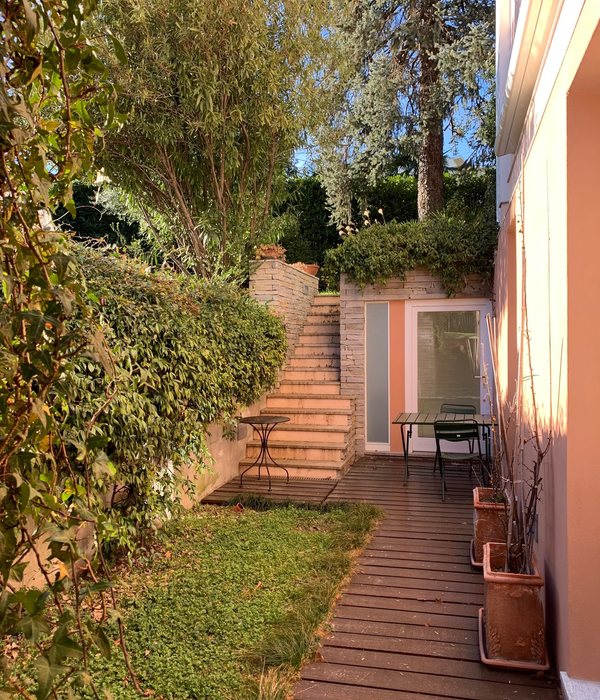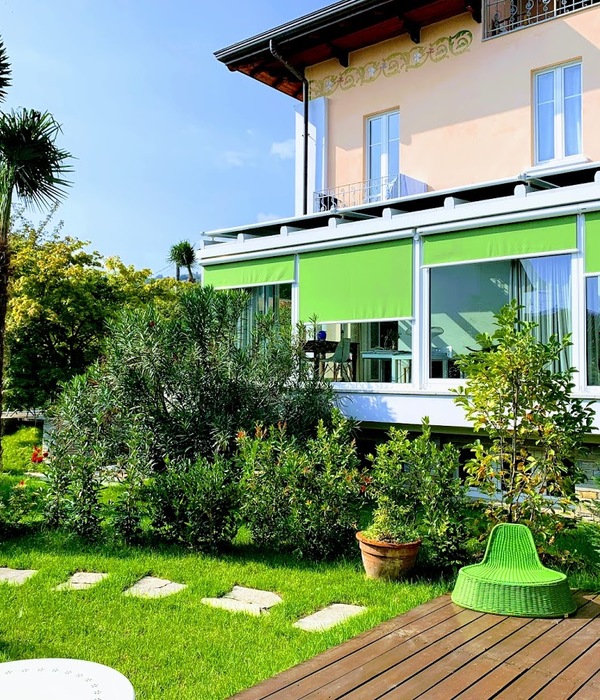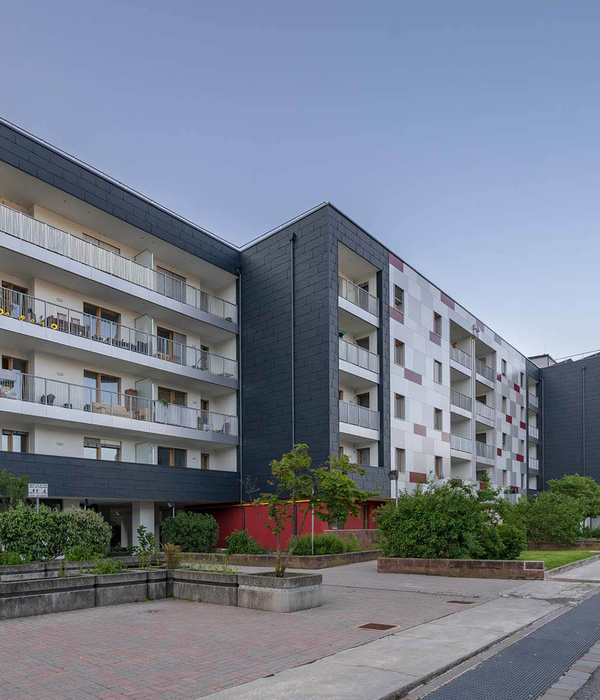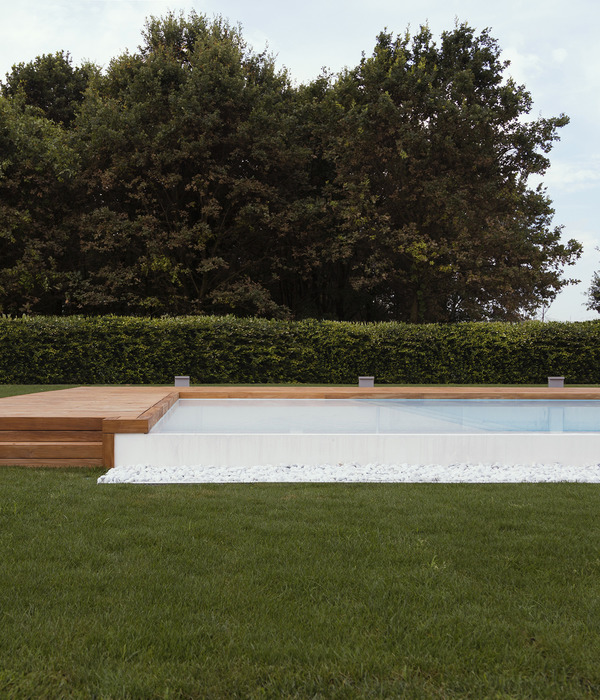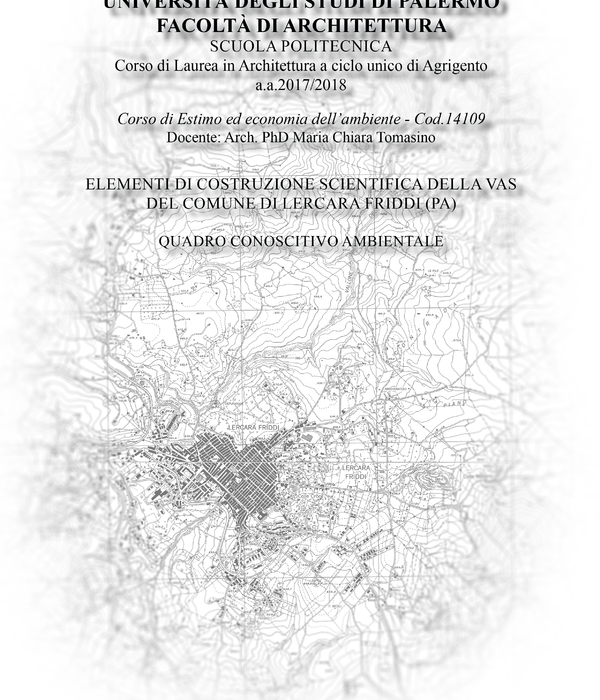这是一个为逝者而设计的项目。数以万计的灵魂以死亡的名义在此相聚,犹如城市中的居民一般。从这个角度出发,我希望按照城市的尺度来构建一套完整的设施。
This architecture represents a facility for the dead. Being a place where ten thousand lives are gathered in the name of death, it is a community and city of the dead. So I decided to design the whole architecture as a complete set of required facilities for a city.
▼墓园鸟瞰,aerial view
每个单独的建筑体量以排屋的形式呈阶梯状分布在场地中。被草坪覆盖的屋顶使整个项目在鸟瞰时如同一块完整的绿地公园。尺度适宜的“排屋”汇聚在一起,形成一个个小社区,并通过斜坡和台阶上的路径与其他的社区相连。共享的设施包括小公园和广场,以及位于每个“社区”之间的灵堂。
With the city located on a slope, it was a rule to make each individual shelter follow the format of a terraced house. Due to grasses covering the roof of houses below, the front side of each terraced house is an independent territory. From a bird’s eye view, the whole place looks like a unique park completely covered with green space. A gathering of terraced houses in appropriate sizes represents a small community, connected to other communities through paths on the slope or steps. Shared facilities including small parks and squares as well as the sanctuary of each community are located at the joint between the communities.
▼建筑体量以呈阶梯状分布在场地中,each individual shelter follow the format of a terraced house
▼被草坪覆盖的屋顶使整个项目在鸟瞰时如同一块完整的绿地公园,from a bird’s eye view, the whole place looks like a unique park completely covered with green space
▼按照城市尺度构建的完整设施,a complete set of required facilities for a city
▼墓地细部,detailed view of the grave
主广场位于最底层的入口处。光洁的水池周围环绕着耐候钢材质的高墙,犹如在向到来的人们示意,这里是一个崭新的宁静世界。
The main square for the city is located at the bottom entrance. With its floor covered by water and surrounded by high walls made of weathering steel, this place eventually tells its visitors that it is a new city of silence.
▼入口处的水景花园,water garden near the entrance
▼水池和高墙示意人们进入一个崭新的宁静世界,with the water and surrounding high walls, the place tells its visitors that it is a new city of silence
▼不同区域通过斜坡和台阶上的路径相连,the small communities are connected through paths on the slope or steps
▼景观细部,landscape detail
仔细想来,墓园又并非属于逝者。人是由体、肉、灵、魂四个部分构成的。当“体”和“肉”被埋葬于墓中,它们终将随尘土完全消逝;而当“体”和“肉”被烧为灰烬时,它们仅仅成为一种象征,无法再见证肉体的存在;代表着意志、情感与激情的“灵”最终也会随着死亡而熄灭;唯有“魂”能够从死亡中留存下来:它是一种不受限制的存在,能够从人类的躯体中自由进出。可是,即使是“灵”,在失去了属于人间的肉体之后,它也不会再停留在墓园之中,而是被驱逐到另外一个世界。
To think of it, graveyard is not a place for the dead. A human being consists of four things: body (體), flesh (肉), soul (靈), and spirit (魂). While body and flesh become a corpse and usually buried in a grave, they dissipate and cease to exist in the end. When incinerated, they are merely a symbol and cannot witness the existence of body and flesh of the person. Soul, which represents human mind, emotion, and passion, also goes extinct at the point of death. Spirit is the only thing that survives death: it is an unconstrained being that freely comes in and out of human body from the first place. However, once a soul loses its body and flesh that belong to this world, it cannot remain in the grave and ousted to another world.
▼墓园由一系列小小的“社区”组成, a community and city of the dead
▼悼念塔内部,interior view of the memorial tower
印第安人流传着一首名叫《化作千风》的诗歌:
“不要在我的坟前哭泣, 我不在那里,也不曾睡去。 我是吹拂的一千缕风。 是闪烁在白雪间的晶莹。 我是阳光照耀着成熟的谷地, 也是秋日里柔柔落下的雨。 当你从静谧的清晨醒来, 我就是鸟儿静静盘旋时 轻快而振奋的飞腾。 我也是每个夜里 温柔闪动的星光。 不要在我的坟前哭泣, 我不在那里,我未曾死去。”
Here is a poem that is said to have been originated from a song of wise Indians, A Thousand Wind.
“Do not stand at my grave and weep I am not there. I do not sleep.
I am a thousand winds that blow. I am the diamond glints on snow. I am the sunlight on ripened grain. I am the gentle autumn rain.
When you awaken in the morning’s hush I am the swift uplifting rush Of quiet birds in circled flight. I am the soft stars that shine at night.
Do not stand at my grave and cry; I am not there. I did not die.”
▼墓园夜景,night view
也许正如这首诗歌所言,居住在墓园里的其实并非逝者,而是我们对于逝者的回忆。我们应当把墓园当做一个回溯记忆和审视自我的场所。这样一来,扫墓的举动也就成为了一种对于生命真实度的确认。因此,我将这座墓园设计为一处仅存在于当下的场景,在任何一个自我怀疑的时刻,它都将在一种肃静的氛围中促使我们想起生活中的美好事物。
What the poem says seems to be right. It is not the dead who dwell in a graveyard: it is our memory of the deceased that lingers there. We should define graveyard as a place and scenery where we bring back the memory of the dead and look into ourselves, not as a place for the dead. Therefore, visiting a graveyard or having it nearby is about ensuring the authenticity of our lives. So I proposed this architecture as scenery of the very moment at a place where we visit to remind the beauty in human life in solemn silence whenever we are in doubt of our identity.
– Seung H-Sang
▼从草坪望向悼念塔,view to the memorial tower from the lawn
▼光之庭院,courtyard of light
▼场地平面图,site plan
▼光之庭院与水景花园平面,plan of Courtyard of Light & Garden of Water
▼墓园局部平面,expanded plan of the boundaries of a grave
▼立面图,elevations
▼剖面图,section
▼悼念塔平立剖,memorial tower drawings
▼墓地细部,detail of charnel tomb
Project : A Thousand Winds, Sian Memorial Park, Gwangju, Gyeonggi-do Location: Neungpyeong-ri, Opo-eup, Gwangju-si, Gyeonggi-do, Korea Architect: Seung H-Sang, Lee Dong-Soo, Kim Sung-Hee Project team: Yun Jong-Tae, Oh Eun-ju, Kim Se-hyeon, Jung Woo-yeal, Lee Jae-min Structural engineer: The Naeun Structural Eng. Mechanical engineer : Rainbow Scape Electrical engineer: URim Elec. Landscape architect: Seoahn Total Landscape + Live Scape Lighting architect: New Lite Program: cemetery(charnel house, natural burials), light garden, water garden, space for contemplation, memorial tower, parking lot Site area : 18,860§³ Structure : reinforced concrete Exterior materials: exposed mass concrete, corten steel, granite Construction period: 2015. 7~2016. 6 Photograph: ©JongOh Kim
{{item.text_origin}}


